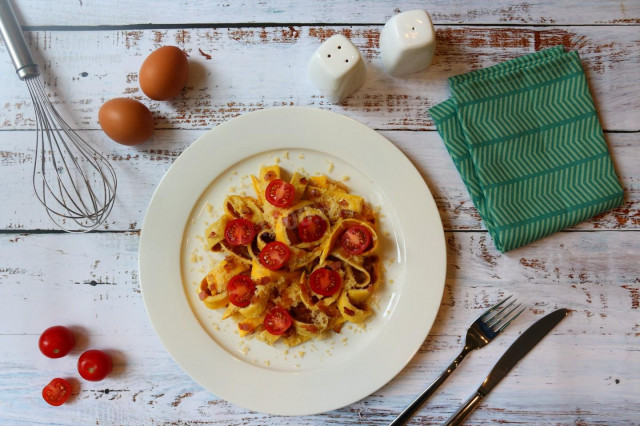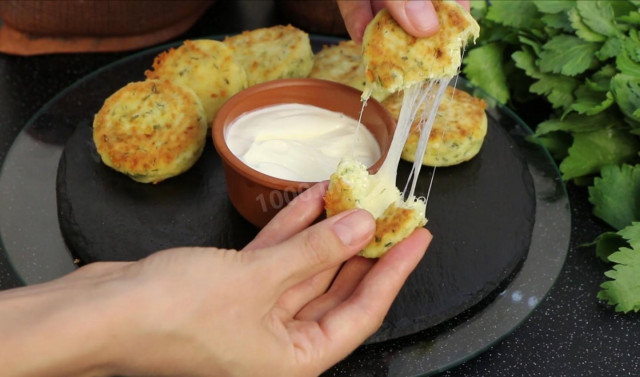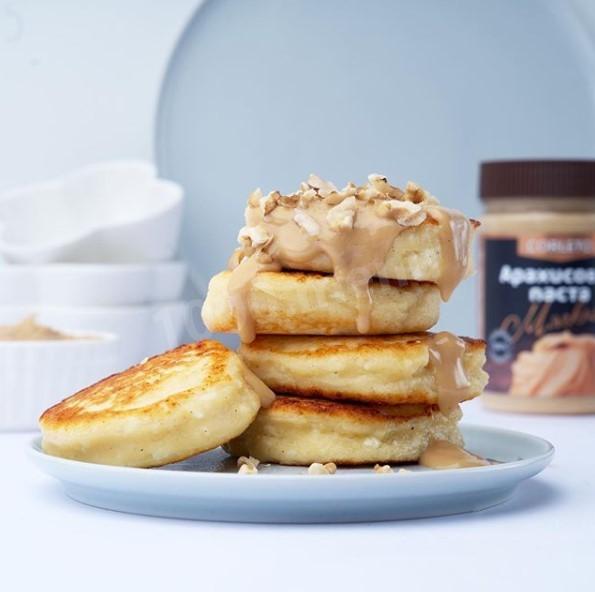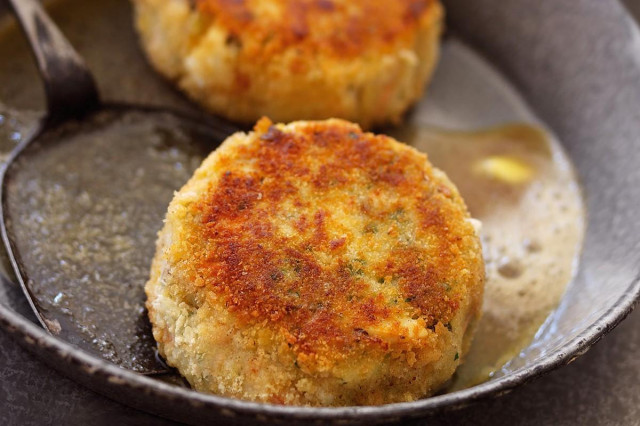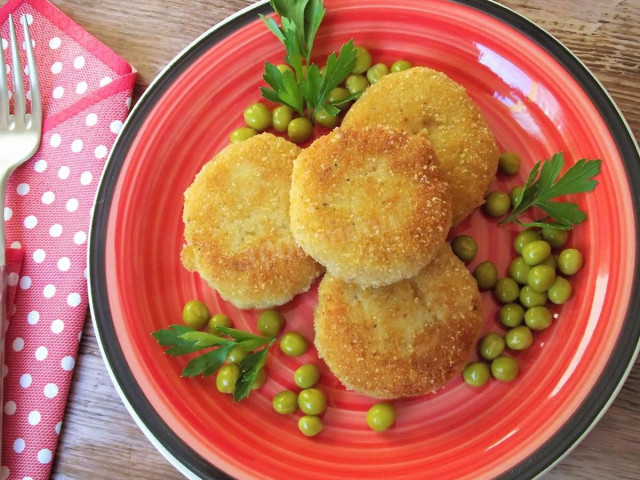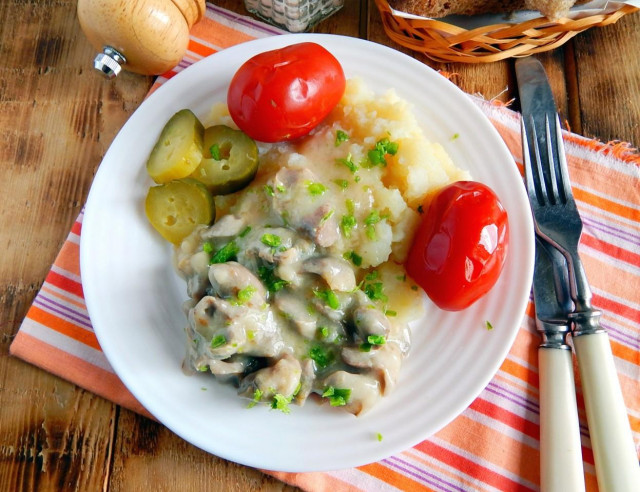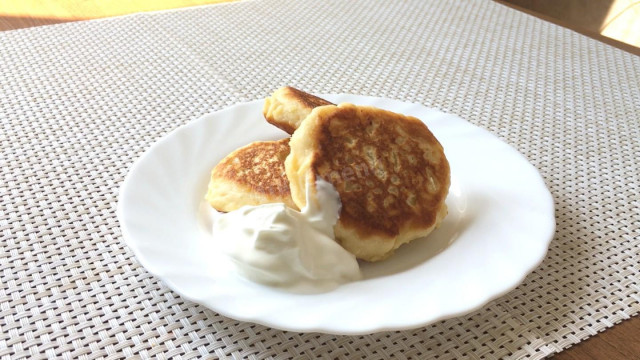Composition / ingredients
Step-by-step cooking
Step 1:
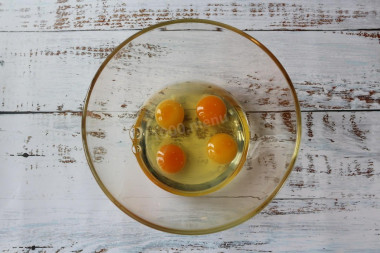
Drive chicken eggs into a deep container. Add a little salt (you can also add a little ground black pepper if desired).
Step 2:
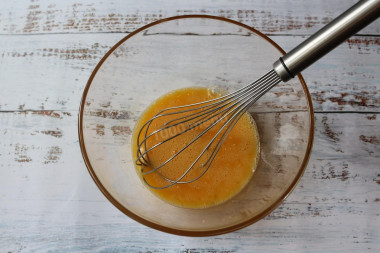
Next, using a whisk, beat the chicken eggs with salt until a light foam appears. Then put the pan on the fire, adding a piece of butter. As soon as the butter is melted, pour the egg mixture into the pan, cover the pan immediately and cook the omelet until ready (you do not need to turn it over and fry it on both sides).
Step 3:
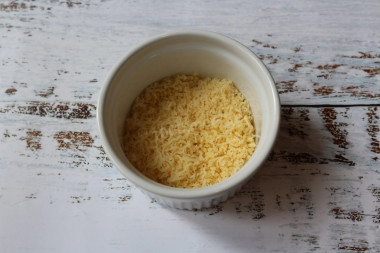
While the omelet is being prepared, it is necessary to prepare the remaining ingredients. To begin with, you can grate the cheese on a fine grater or a special grater, turning it into a crumb (as parmesan cheese is served when serving pasta). The taste of the finished dish depends on how the cheese is grated. I prefer the second option.
Step 4:
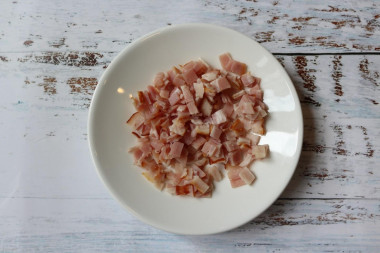
Now we need to do the bacon. Smoked-boiled bacon cut into small cubes, then lightly fry in a frying pan without adding any oil. You can also use raw smoked bacon, but it is greasier and has a slightly different taste. It seems to me that such bacon will interrupt the delicate taste of the omelet.
Step 5:
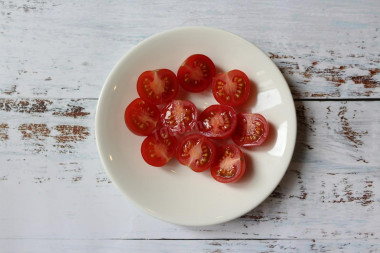
Cherry tomatoes cut in half.
Step 6:
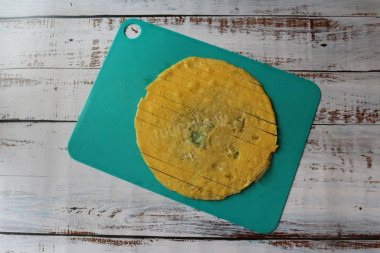
When the omelet is ready, it must be laid out on the work surface and cut into strips. In order for the omelet strips to be beautiful, I used a ruler, but this is not necessary at all.
Step 7:
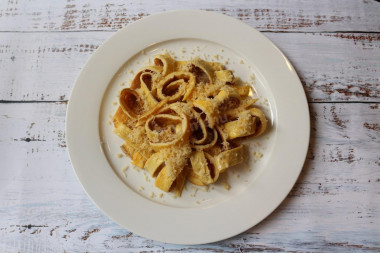
Now you should beautifully lay the omelet strips on a plate, sprinkling them with grated cheese on top.
Step 8:
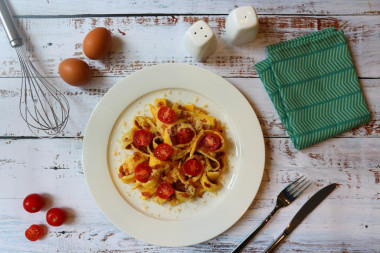
Next, the cooked dish should be sprinkled with small cubes of fried bacon and put the chopped cherry halves on top.
Omelet is the dish that people usually prefer to eat for breakfast. And in order to diversify your breakfasts and turn them from ordinary to "magical", sometimes you need to change just a little bit. No secrets are used in the preparation of this dish. The classic egg omelet is simply cut into narrow long strips. And that's it!!! So this dish has many advantages: a cooked breakfast will not take much time, it will not have any "specific" taste that may not be to everyone's liking (the recipe uses "marketable" products that most people eat), and the appearance of the dish itself will look advantageous on the table with its submission.
Caloric content of the products possible in the composition of the dish
- Dutch cheese - 352 kcal/100g
- Swiss cheese - 335 kcal/100g
- Russian cheese - 366 kcal/100g
- Kostroma cheese - 345 kcal/100g
- Yaroslavsky cheese - 361 kcal/100g
- Altai cheese 50% fat content - 356 kcal/100g
- Soviet cheese - 400 kcal/100g
- Cheese "steppe" - 362 kcal/100g
- Uglichsky cheese - 347 kcal/100g
- Poshekhonsky cheese - 350 kcal/100g
- Lambert cheese - 377 kcal/100g
- Appnzeller cheese with 50% fat content - 400 kcal/100g
- Chester cheese with 50% fat content - 363 kcal/100g
- Edamer cheese with 40% fat content - 340 kcal/100g
- Cheese with mushrooms of 50% fat content - 395 kcal/100g
- Emmental cheese with 45% fat content - 420 kcal/100g
- Gouda cheese with 45% fat content - 356 kcal/100g
- Aiadeus cheese - 364 kcal/100g
- Dom blanc cheese (semi-hard) - 360 kcal/100g
- Lo spalmino cheese - 61 kcal/100g
- Cheese "etorki" (sheep, hard) - 401 kcal/100g
- White cheese - 100 kcal/100g
- Fat yellow cheese - 260 kcal/100g
- Altai cheese - 355 kcal/100g
- Kaunas cheese - 355 kcal/100g
- Latvian cheese - 316 kcal/100g
- Limburger cheese - 327 kcal/100g
- Lithuanian cheese - 250 kcal/100g
- Lake cheese - 350 kcal/100g
- Gruyere cheese - 396 kcal/100g
- Butter 82% - 734 kcal/100g
- Amateur unsalted butter - 709 kcal/100g
- Unsalted peasant butter - 661 kcal/100g
- Peasant salted butter - 652 kcal/100g
- Melted butter - 869 kcal/100g
- Boiled bacon - 447 kcal/100g
- Salt - 0 kcal/100g
- Chicken egg - 80 kcal/100g
- Cherry tomatoes - 15 kcal/100g

